There comes a time when the notion of casting through icy guides or standing in frigid water in search of trout feels more like a chore than an actual fishing endeavor.
But sometimes the urge is simply too great—particularly on familiar water where the exploration process isn’t as important as past knowledge. The elements are easier to handle if you know, generally, what’s coming.
Such is the case with Idaho’s Bear River as it runs through Black Canyon near the little farming town of Grace and just over Fish Creek Summit from the resort community of Lava Hot Springs. This is one of only a handful of public access points to the Bear in Idaho that’s easily reached by the public—a cooperative arrangement between Idaho Fish and Game and Pacificorp allows anglers to visit this gorgeous stretch of river in southeastern Idaho, where rainbows and native Bonneville cutthroat trout can be dependably targeted.
And winter might be the best time of year to pay this stretch of river a visit.
Here’s the deal—taking on the Bear isn’t your typical winter fly fishing expedition. Most of the Bear River is actually diverted into a pipe above the town of Grace for hydropower production. What’s left in the riverbed as it flows through Black Canyon is spring water that seeps into the riverbed and runs much warmer than the average ambient temperature of your usual December or January day. And there’s enough water to support truly good fishing—for truly respectable trout—in this stretch of water, no matter what month of the year you choose to visit.
I’ve been fishing Black Canyon for years—it was one of the first destinations I visited upon moving to Idaho in 1999, and hardly a winter goes by without at least one visit to this lonely volcanic canyon that slices through the spud fields of Gem Valley. The river through Black Canyon tumbles over travertine bedrock, creating a series of deep plunge pools followed by shallow runs and moss-laden slots—all of them fishy.
For years, the river through Black Canyon was managed as a put-and-take fishery—hatchery rainbows quickly adapted to the cold, clear waters of this unique stretch of river, and many were pulled out within days of being stocked. But many held on, and the river was home to a fruitful holdover fishery for rainbows that would occasionally reach lengths of 17 or 18 inches.
Several years ago, the Cove Dam on the Bear River just below Black Canyon was removed. The hydropower dam was taken out after years of negotiations between Trout Unlimited and other conservation groups and the dam’s operator—Pacificorp. Once the dam came out and flows were negotiated, the river’s native Bonneville cutthroat trout were free to move farther up into the Bear River system. Suddenly, Black Canyon became a native trout destination.
Bonnevilles are perhaps the heartiest of the cutthroat subspecies. And in the Bear, they’re incredibly resilient. In areas upstream of Black Canyon, research has shown that they migrate miles and miles into the river’s tributaries—when that’s possible—under the cover of spring runoff, and are often back in the river’s mainstem by the time runoff subsides. The Bear through much of Idaho is slow and muddy thanks to heavy agricultural development. In many areas, carp outnumber trout, and the big migratory Bonneville cutthroat trout do what they do naturally and eat the baby non-natives.

Through Black Canyon, the Bonnevilles are starting to make a comeback, and they’re more common today than at anytime in recent memory. And, because the river stays relatively warm all winter long thanks to spring seeps, the river’s cutthroats and its planted rainbows have lots of spring-creek-like food to choose from, including damselfly nymphs, mayfly nymphs and caddis nymphs. And the usual winter midge hatches found throughout the Rockies are amplified in Black Canyon—it’s unusual to go a full day without seeing at least one pod of trout working on dry flies.
While an angler could find a little motel in Grace to serve as home base, I would recommend, if you’re visiting this stretch of Idaho in the winter, that you lay your head in Lava Hot Springs. This little resort community is aptly named—it literally straddles the Portneuf River where a piping hot series of hot springs bubbles up from the ground. The springs are tapped by the town’s hotels—including my favorite Lava destination, The Riverside Inn—and private soaks in perfectly hot water help warm the bones after a day spent casting to rising trout on a brisk winter day.
As for gear, you’re good with a standard 5-weight, but, given the spring-creek characteristics of the Bear through Black Canyon, consider going a little lighter, particularly if you’re after rising fish. Small size 18-20 midge patterns and midge cluster patterns (the Griffith’s Gnat is my favorite) will bring eager fish to the top. I like to fish the Bear with a 3- or 4-weight, simply because delicate presentations are important when the fish are on top.
That said, the Bear’s rainbows and cutthroats will hit streamers, so something with a little backbone is a good idea.
Yeah, it’s cold out there. But if you know what to expect, it’s a bit easier to slide into those neoprenes.




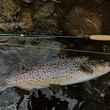
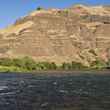
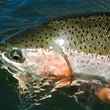




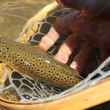
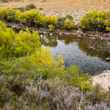



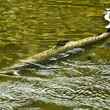
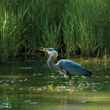




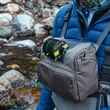



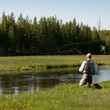
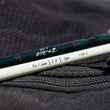

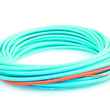
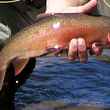
Comments
Mike Sepelak replied on Permalink
There comes a time when the notion of casting through icy guides or standing in frigid water in search of trout feels more like a chore than an actual fishing endeavor.
Yeah, and that's why, as I type this, you're winging your way to Mexico. Glad that you stayed in the neoprenes long enough to clue us in on The Bear. Safe travels.
Chris Hunt replied on Permalink
If you make it out West this summer... we'll consider this stretch of river, but, honestly, it fishes better in winter. I'll turn you on to some really great water when you get here. Stay tuned for Mexico pics...
Mike Sepelak replied on Permalink
If? Brother, you can count on it. As for the Mexico pics, I have some seriously mixed emotions about seeing them. :-)
Aileen Lane replied on Permalink
This winter is the most I have spent fly fishing - it's been a challenge, but very enjoyable at the same time. Thank goodness for hot springs - I forgot my wonderful gloves once and when my hands turned purple, I jumped right in the "hot tub."
Pages